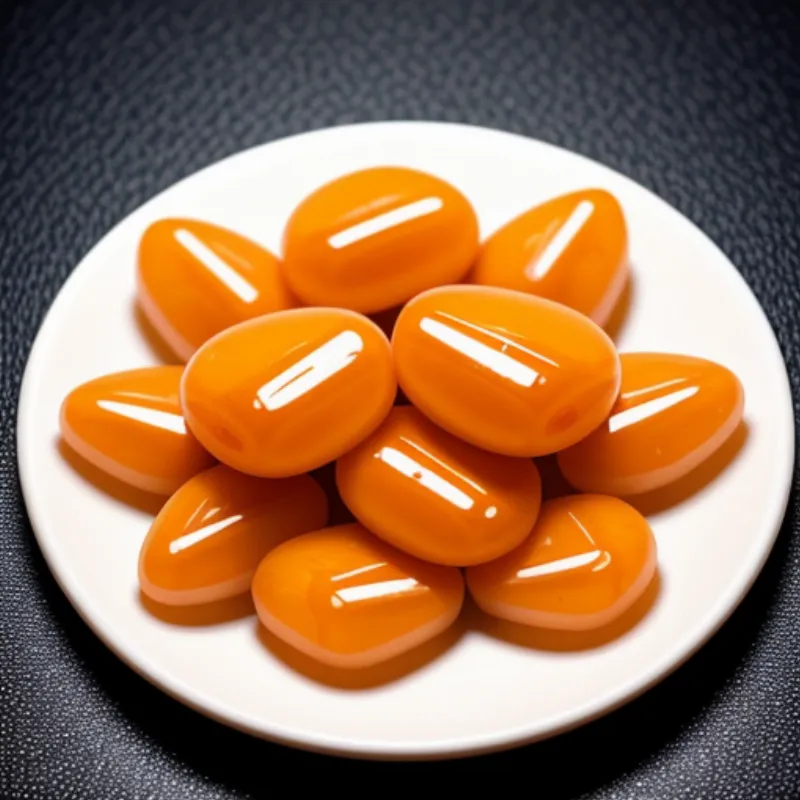Acitrón, a traditional Mexican candy made from the biznaga cactus, offers a unique flavor experience that’s both sweet and slightly tart. Imagine biting into a candied fruit with a texture somewhere between a firm pear and a juicy pineapple – that’s acitrón! While not widely known outside of Mexico, this delicacy plays a starring role in various festive dishes, adding a touch of sweetness and a delightful crunch. Intrigued? Let’s embark on a culinary adventure and learn How To Make Acitrón right in your own kitchen.
Unveiling the Magic of Acitrón
Making acitrón might seem like a daunting task, but fear not! With a little patience and the right guidance, you can recreate this traditional treat and impress your friends and family. We’ll guide you through each step, ensuring you have all the knowledge and confidence to master this culinary gem. Ready to bring a taste of Mexico to your table? Let’s dive in!
Gathering Your Ingredients
Before we begin our acitrón-making adventure, let’s gather the necessary ingredients. You’ll be surprised by the simplicity of this recipe:
- Biznaga cactus: 1 kg (approximately 2.2 lbs), peeled and cubed (Look for canned biznaga if fresh is unavailable)
- Sugar: 1 kg (approximately 2.2 lbs)
- Water: 1 liter (approximately 4 cups)
- Lime: 1, juiced
- Optional: A cinnamon stick for an extra layer of flavor
Finding Biznaga: Biznaga cactus can be found at some Latin American grocery stores or online.
Tools of the Trade
To make this recipe a breeze, you’ll need the following kitchen essentials:
- Large pot
- Sharp knife
- Cutting board
- Slotted spoon
- Baking sheet
- Parchment paper
Crafting the Candied Cactus
Now, let’s transform these simple ingredients into delectable acitrón:
- Prepare the biznaga: Begin by carefully peeling and cubing the biznaga cactus. If using canned biznaga, drain and rinse it thoroughly.
- Create the syrup: In the large pot, combine the sugar, water, and lime juice. Stir well and bring the mixture to a boil over medium heat, making sure the sugar dissolves completely.
- Welcome the biznaga: Gently add the cubed biznaga to the boiling syrup. Reduce the heat to low, cover the pot, and allow the cactus to simmer for approximately 2-3 hours, or until it turns translucent.
- Test for doneness: To check if the acitrón is ready, pierce a piece with a fork or toothpick. It should be tender and easily pierced.
- Embrace the cooling: Once cooked, carefully remove the acitrón pieces from the syrup using a slotted spoon and transfer them to a baking sheet lined with parchment paper.
- Air-dry for perfection: Allow the candied cactus to air dry at room temperature for 24-48 hours, or until it develops a slightly firm outer layer.
Tips for Acitrón Triumph
- Patience is key: Remember that making acitrón is a labor of love. The slow simmering process is crucial for achieving the perfect translucent texture.
- Adjust sweetness: Feel free to adjust the amount of sugar to your liking. For a less sweet version, reduce the sugar by ¼ cup.
- Storage is simple: Once dried, store your homemade acitrón in an airtight container at room temperature for up to 2 weeks.
Serving Your Acitrón Masterpiece
Congratulations, you’ve created acitrón! Now comes the enjoyable part – savoring its unique flavor. Here are some serving suggestions:
- Traditional delight: Dice the acitrón into small pieces and use it as a traditional topping for Rosca de Reyes, a Mexican sweet bread enjoyed during the Epiphany.
- Festive flair: Add a touch of sweetness and crunch to your holiday dishes by incorporating chopped acitrón into fillings for tamales or chiles en nogada.
- Sweet and savory balance: Experiment with acitrón in savory dishes like mole poblano or pipián verde for a surprising twist of flavor.
 Acitrón Simmering in Syrup
Acitrón Simmering in Syrup
 Dried Acitrón Candy
Dried Acitrón Candy
Exploring Acitrón FAQs
Q: Can I use a sugar substitute?
A: While traditional acitrón recipes call for sugar, you can experiment with sugar substitutes like agave nectar or monk fruit sweetener. Keep in mind that this might slightly alter the texture and taste of the final product.
Q: My acitrón is too soft. What happened?
A: This could happen if the acitrón wasn’t cooked long enough or if it wasn’t dried properly. To fix it, try simmering it for a bit longer or increasing the drying time.
Q: Is acitrón healthy?
A: Acitrón is a type of candied fruit, so it’s relatively high in sugar. Enjoy it in moderation as part of a balanced diet.
A Sweet Conclusion
Making acitrón at home is a rewarding experience that allows you to connect with Mexican culinary traditions. From the intoxicating aroma that fills your kitchen to the first bite of this unique candy, you’re sure to impress your taste buds and create lasting memories. So, why not embark on this culinary adventure and discover the magic of acitrón for yourself?
We’d love to hear about your acitrón-making journey! Share your experience, tips, and photos in the comments below. And don’t forget to explore our other delicious recipes on Family Cuisine for more culinary inspiration.
